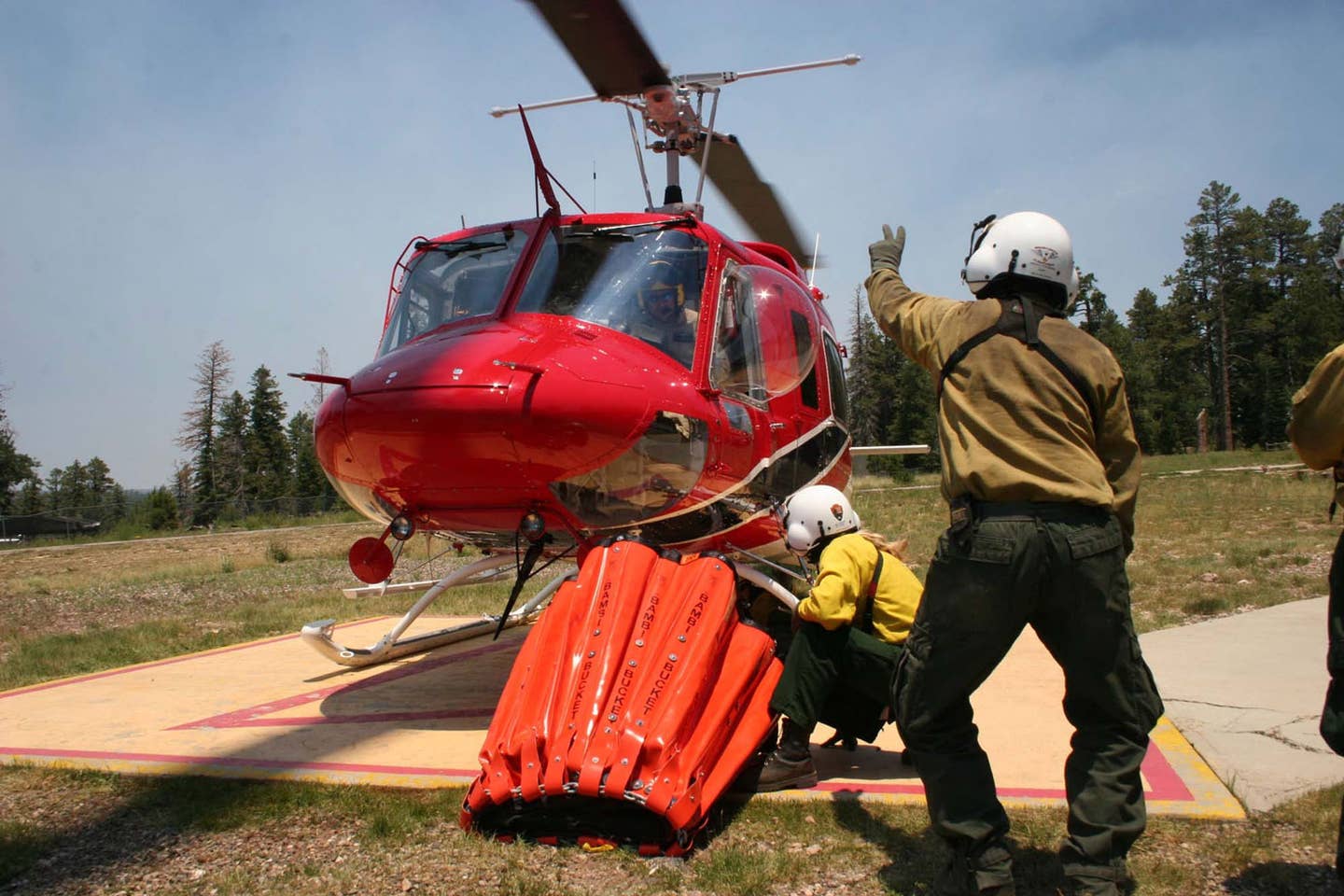
Helicopter pilots often perform bucket drops to assist in fire suppression, as in this National Park Service operation in the Grand Canyon. National Park Service
While we don't have hard figures on their ranks or the number of jobs that exist, demand for aerial firefighter pilots is increasing, industry experts say. "There are opportunities, but it's not very well-organized," says Dean Talley, an air tanker captain and board member of the Associated Aerial Firefighters. In fact, operators "are having a lot of trouble filling positions," with retirements creating vacancies and brisk airline hiring draining the already-small applicant pool for aviation firefighters, the former Coast Guard and ag pilot says. The problem continues today.
Federal agencies employ some aerial firefighter pilots, but most work under seasonal contracts for companies the agencies hire for fire protection. The U.S. Forest Service, the largest federal contractor of aerial firefighting services, also has 52 full-time pilots, according to an agency spokesperson. The Bureau of Indian Affairs, Bureau of Land Management and National Park Service also contract aerial firefighting services, as do individual states and agencies within states.
Both fixed- and rotor-wing aircraft are used. Fixed-wing platforms range from single-engine air tankers (SEATs) often adapted from crop-dusters, such as the Thrush 510 and Air Tractor 802 Fire Boss, to larger tankers (more than 3,000-gallon capacity), including jet transports repurposed for dropping massive firefighting loads. However, rotorcraft from a host of municipal agencies actually dominate the aerial fleet, though firefighting is typically just one of these helicopters' multipurpose roles.
Some pilots, rather than fire bombing, fly the King Airs or OV-10 Broncos that often serve as the observation platform for the forward air controller who directs the fire attack.
How to Become a Firefighter Pilot
Pilot backgrounds are diverse, including military, bush and airline flying, but tailwheel and low-level flying experience — the latter over terrain — are typical requisites.
“It does require a natural ability at flying the airplane,” says Cliff Hale, chief pilot and vice president of flight operations at Global SuperTanker Services. “There’s no automation that’s going to help you, so if you’re the type of pilot who relies heavily on automation, it’s probably not the place for you.”
Hale’s company owns and operates Global Supertanker, a 747 converted in 2016 into the world’s largest fire bomber, with a 19,000-plus-gallon capacity. To prepare for a platform like this, “Experience in underpowered, small airplanes is actually preferred,” says Hale. “That’s where you really learn this stuff.”
With no standard training program for the profession, one career path into the hot zone is serving as a pilot in an observation aircraft, then transitioning into a SEAT or the right seat of a larger tanker.
Aerial Firefighting Salary
The average annual salary range for a Forest Service pilot is $73,600 to $113,800. Contract SEAT pilots have traditionally been paid by flight time, “so income is much more fluid” but can be “in the hundreds of thousands” of dollars in a busy season, says Talley. However, the SEAT fleet has been evolving to a fee-per-season contract, with “minor incentives for extra hours,” providing more stable earnings.
Captains on a large air tanker might earn from $100,000 in the first season to $360,000 for a senior captain, with the seasonal hiring arrangement an attraction for many firefighters. “A lot of these pilots like their winters off,” says Hale. But with demand for such services in the Southern Hemisphere growing, and the extended fire season in North America, it’s becoming a full-time job. “California just had its largest fire ever, and it was in the month of December,” notes Hale, whose company has four pilots. “The industry is moving toward full-time [employment], with schedules of time on and off on a year-round basis.”
More information on firefighter pilot careers is available here.

Sign-up for newsletters & special offers!
Get the latest FLYING stories & special offers delivered directly to your inbox






